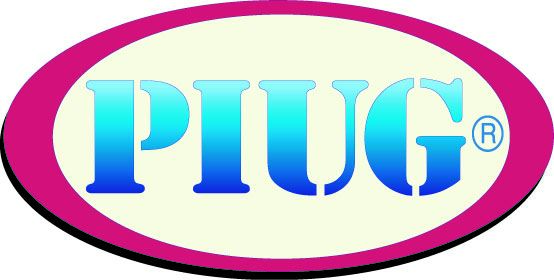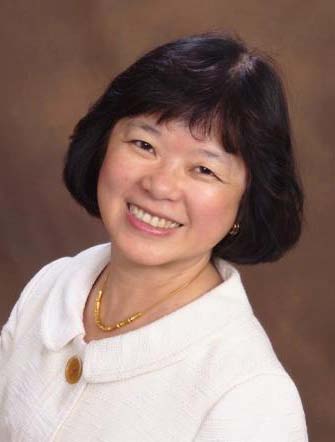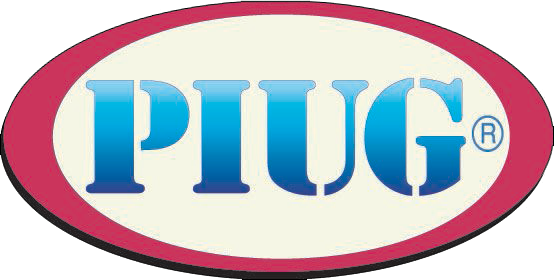PIUG-PIAC Asia 2016 Session
PIUG-PIAC Partnership: Roadmap to Excellence in Providing High-value Patent Information ServicesSeptember 20, 2016, 1:30pm - 5:30pmChina National Convention Center Floor 3, Tower C, Room 311B No.7, Tianchendong Road, Chaoyang District Beijing, China, 100105 ProgramThe PIUG would like to inform all conference attendees that the use of photographic or recording devices of any kind to create recordings of the PIUG-PIAC Asia Session is strictly prohibited. This includes recordings by the audience for personal use. Please note that the speakers listed below may change if circumstances arise. Accordingly, please monitor this web page for updated information. Technical Session - Tuesday, September 20, 2016
Session Abstracts and BiographiesKeynote Address: PIUG - Learning & Networking Opportunities for Patent Information Users WorldwideAbstract Almost three decades ago, a small group of patent information specialists in the United States met to form a group that would allow open communications among individual patent searchers, discuss common issues relevant to the patent searcher community, and provide a unified, independent voice on these issues to service/database providers. That meeting gave birth to the Patent Information Users Group (PIUG). The group began by holding annual business meetings, usually in association with other database producers' user meetings; committees tasked with advocacy for improved availability of and tools for patent information; a printed newsletter; and an online message board. Since then, PIUG has not only thrived domestically, but it has also gained a much wider presence worldwide. Today, it is known as "The International Society for Patent Information Professionals," as evidenced by the regular participation of regional and national patent offices at PIUG conferences; outreach by other patent information user groups to partner with PIUG in various initiatives; and active dissemination of new patent-related information tools, services and initiatives on the PIUG wiki discussion forum and in our e-newsletter. I plan to present an overview of PIUG, including its core mission, a brief history, five-year strategic goals, committee and conference activities, key milestones/accomplishments, and benefits of PIUG membership.Cynthia S. Barcelon Yang Cynthia S. Barcelon Yang is Director, Enterprise Information Management Services, leading the Scientific Information & Patent Analysis Group at Bristol-Myers Squibb (BMS), to provide value-add analysis of the scientific and patent literature, including text mining/data visualization capabilities, across R&D, IP/Legal and Business Development. She has over 25 years of experience in the scientific and patent information field, with previous eight years as a medicinal bench chemist. Educated in the Philippines with B.S. Chemistry honors (magna cum laude), she obtained her M.S. degree in Physical-Organic Chemistry from Marquette University, Milwaukee, WI, USA and a M.S. degree in Information and Library Science from Drexel University, Philadelphia, PA, USA. She also obtained a Certificate in Competitive Intelligence from University of Pennsylvania Wharton Business School. In addition to active PIUG involvement as current Co-Chair of PIUG Partnerships and Patent Offices Committee, past PIUG Chair (2009-2010), Immediate Past Chair (2011-2012) and Director-at-Large (2012-2016), Cynthia is also on the Editorial Board of the Pharmaceutical Patent Analyst (PPA) journal, a Member of the Scientific Technical Network (STN) Advisory Council and the Bristol-Myers Squibb delegate to the Patent Documentation Group (PDG). She is author/co-author of 16 peer-reviewed scientific publications, book chapters and co-inventor of 2 pharmaceutical patents. Cynthia has been an invited speaker in past events organized by the US Patent & Trademarks Office (USPTO) and World Intellectual Property Office (WIPO). Bio Patent Searching in Assessment of FTOAbstract A Freedom to Operate (FTO) is legal analysis on existing patents to understand whether a product, process or service may be considered to infringe patent(s) owned by others before beginning to develop such a product or process or offering such a service. Patent searching is the first, key step of FTO analysis. A bio patent search will search any patents related to inventions in the field of "biology", which can be very board and include chemistry and pharmacology. The major techniques for a bio patent search are sequence searching and keyword searching. The best search result can be achieved by combining a searcher's understanding on subject matter of the request, knowledge of biologics fields, and patent databases. The critical considerations for sequence searching and keyword searching are given in this presentation.Sunny Wang Biography
Sunny Wang heads the Patent Operations of Global IP Department at SANOFI since 2012. Her team has the overall responsibility in supporting patent attorneys globally for all aspects of patent filing, docketing, administrating and patent information searching. She was the manager of Patent Information & Analysis (PI±A) team from 2008-2012. Under her leadership and management, the PI&A team had been completely transformed and its productivity had been increased 2-3 folds. She is a US PTO registered patent agent since 2003. Prior to being the manager and an information specialist with Patent Bar qualification, she was a molecular biologist with over fifteen peer-reviewed scientific papers and book chapters published as first author or co-author. Educated in China with a B.S in Biochemistry, she graduated from the University of North Carolina at Chapel Hill with a Master degree in Biological Chemistry. She was a member of the ACS Joint Board-Council Committee on Chemical Abstract Service (CCAS) for three years. Additionally, she also served as president and currently the secretary of Tris CACS (Chinese American Chemical Society) and successfully organized the First, Second and Third Beijing International Pharmaceutical and Chemical IP Forum in 2006, 2009 and 2012 in China. Chemistry Patent Searching For Determining Freedom-To-OperateAbstract Chemistry spans a broad range of products and processes and the professional searcher must be able to understand not only the chemistry, but also the patent life cycle in order to devise a search that will identify potential patent infringement risks. The different interpretations of Freedom to Operate (FTO) from a patent attorney's perspective and how these interpretations can impact on the scope of the search will be discussed. The unique considerations when searching patent publications that claim pharmaceutical or agrochemical products will also be discussed with the aim of improving FTO searches.Susanne Hantos Biography
Ms. Susanne Hantos is a Senior Associate and the Manager of the Patent Intelligence Services division of Davies Collison Cave, an Australian intellectual property law firm. Ms Hantos is a registered Australian and New Zealand patent attorney and a Canadian patent agent who specializes in searching and assessing patent and non-patent information in order to provide intellectual property advice to corporations, universities, government agencies, non-government organisations and non-profit entities. She has a Bachelor of Science Honours degree in Applied Chemistry from the University of Guelph, Ontario, Canada and a Master of Science degree in Organic Chemistry from the University of Ottawa, Ontario, Canada. Ms Hantos also has a Master of Library and Information Science degree from the University of Western Ontario, Canada and a Master of Industrial Property degree from the University of Technology, Sydney, Australia. Ms Hantos is a former Chair (2012-2014) of the Patent Information Users Group Inc. (PIUG). She is also a volunteer co-ordinator of the international patent information professional certification initiative, QPIP, since 2008. In June 2014, Ms Hantos was appointed as the Co-Editor-in-Chief of World Patent Information, a peer-reviewed scholarly journal for those who work with intellectual property information. Patent Analytics for Empowering Business DecisionsAbstract Patent information is the largest valuable information source for life science research and business intelligence. It is mostly in electronic form today, yet it can be just as disorganized as in paper format. Furthermore, the volume of patents and patent applications has increased significantly over the years. There is simply too much information to read and synthesize. In addition, information is often buried within the body of the patent. Extracting relevant information for knowledge discovery becomes extremely challenging. As patent analysts, we have to manually pore over large numbers of documents to extract relevant nuggets of information. By exploring other approaches and innovative tools to uncover, interpret, digest and visualize information, we may begin to quickly provide value-added analysis and foresight into strategic activities, such as, evaluating competitors' business strategies and research trends, deciding what areas of research to explore, assessing what new technologies to acquire, and determining which partnerships or in-licensing/out-licensing opportunities to pursue. With advances in computing & linguistic technologies, new text mining and visualization tools have emerged in the marketplace within the last 10 years or more. Critical considerations for leveraging patent analytics tools will be described, including use case studies in company profiling and technology assessment for determining the direction and implementation strategy of business investment decisions.Cynthia S. Barcelon Yang |
 Search
Search Community
Community Job Board
Job Board



